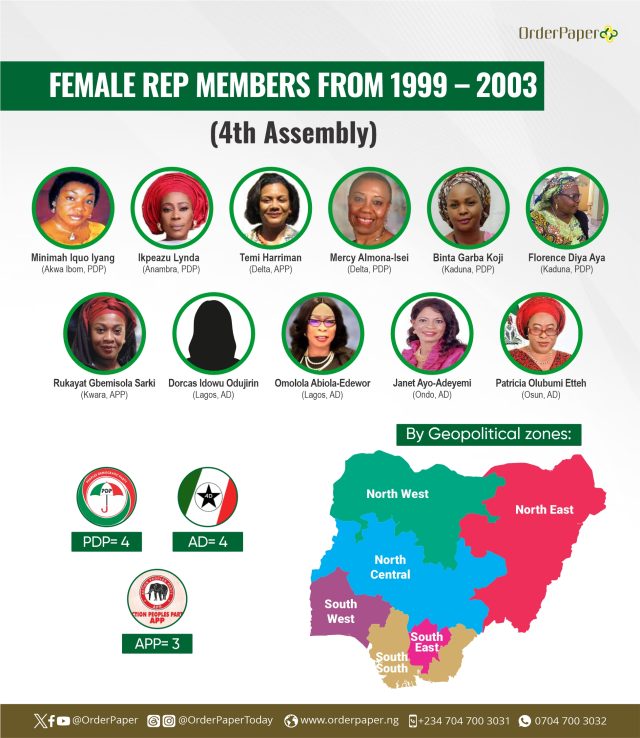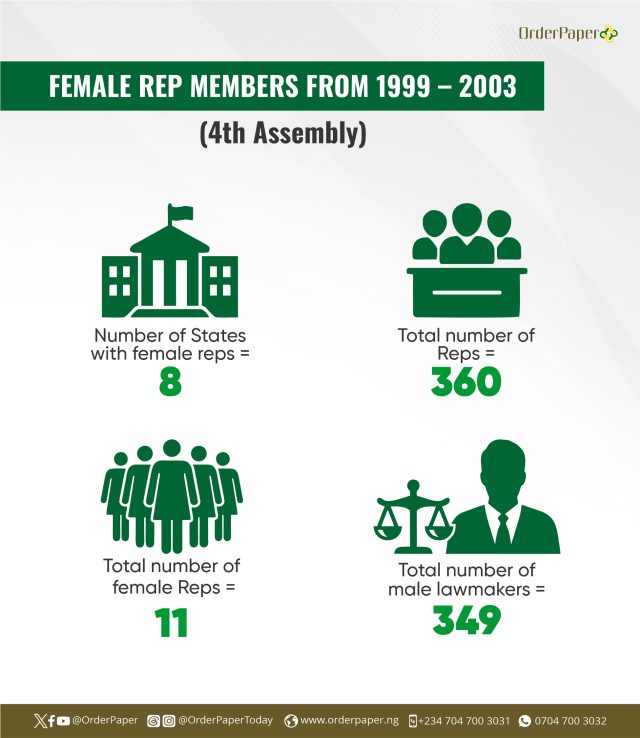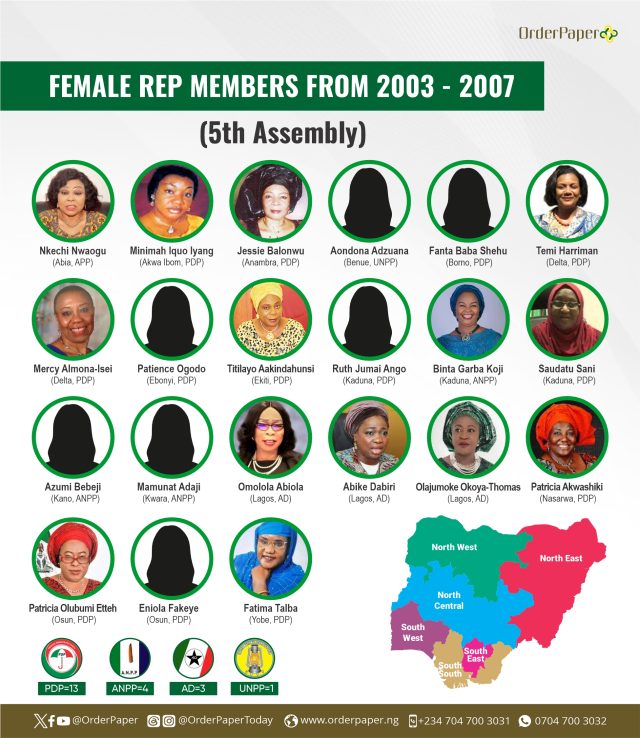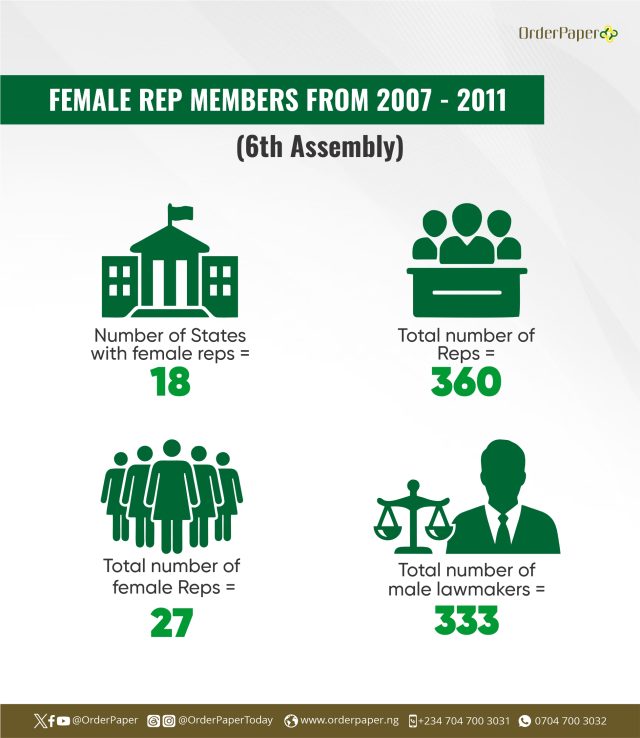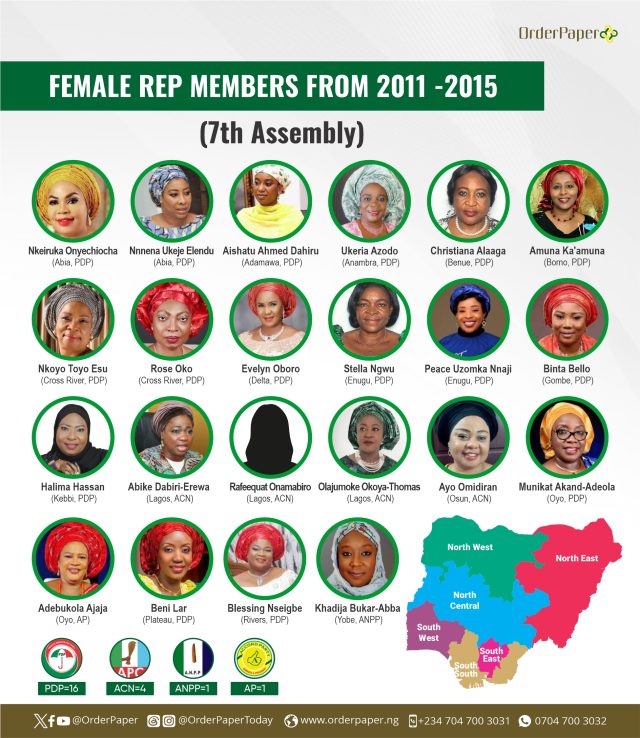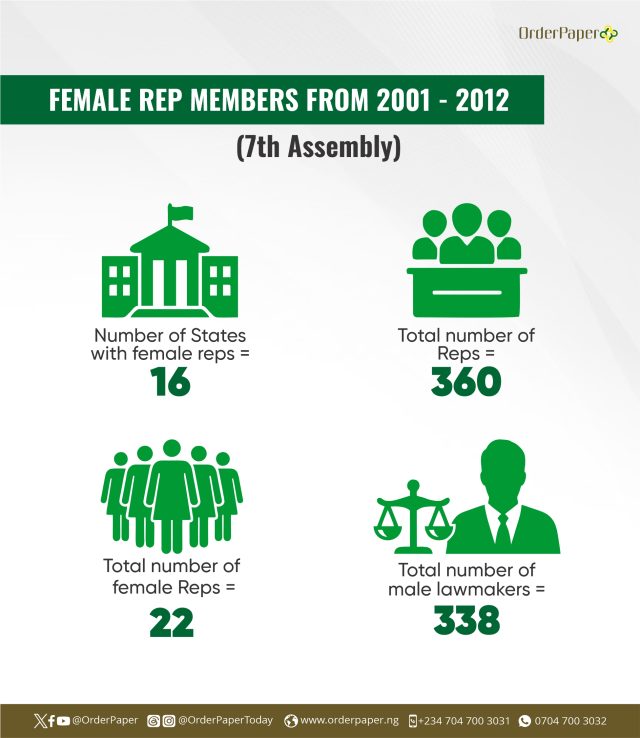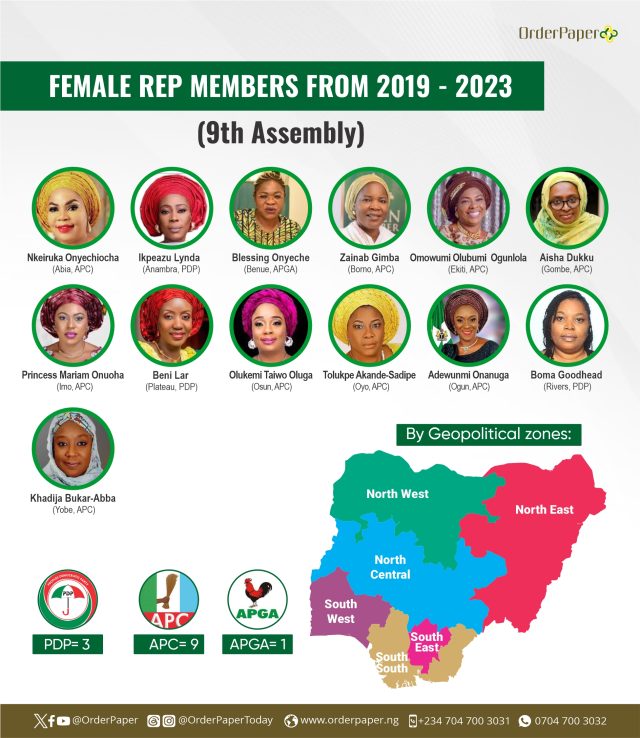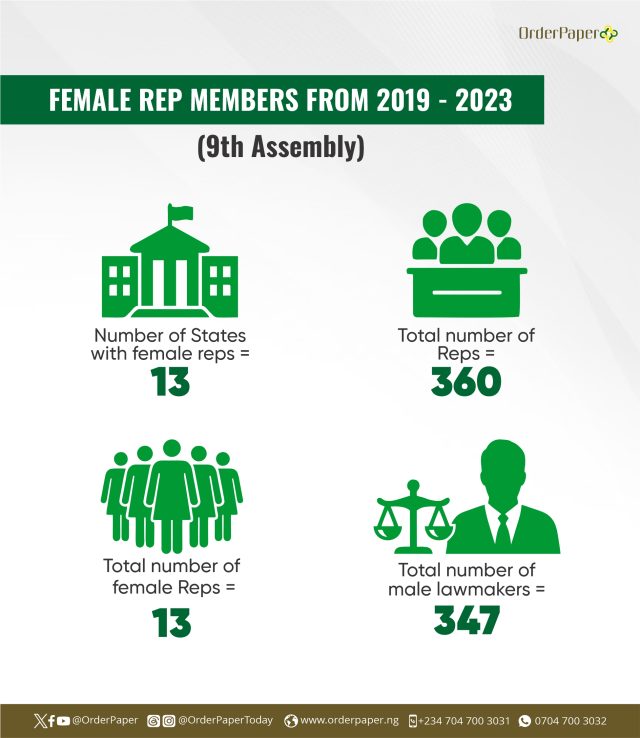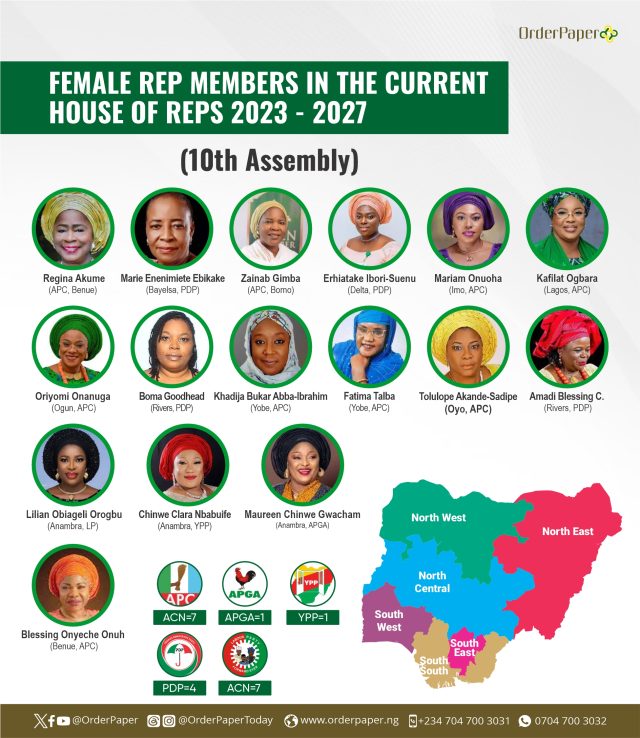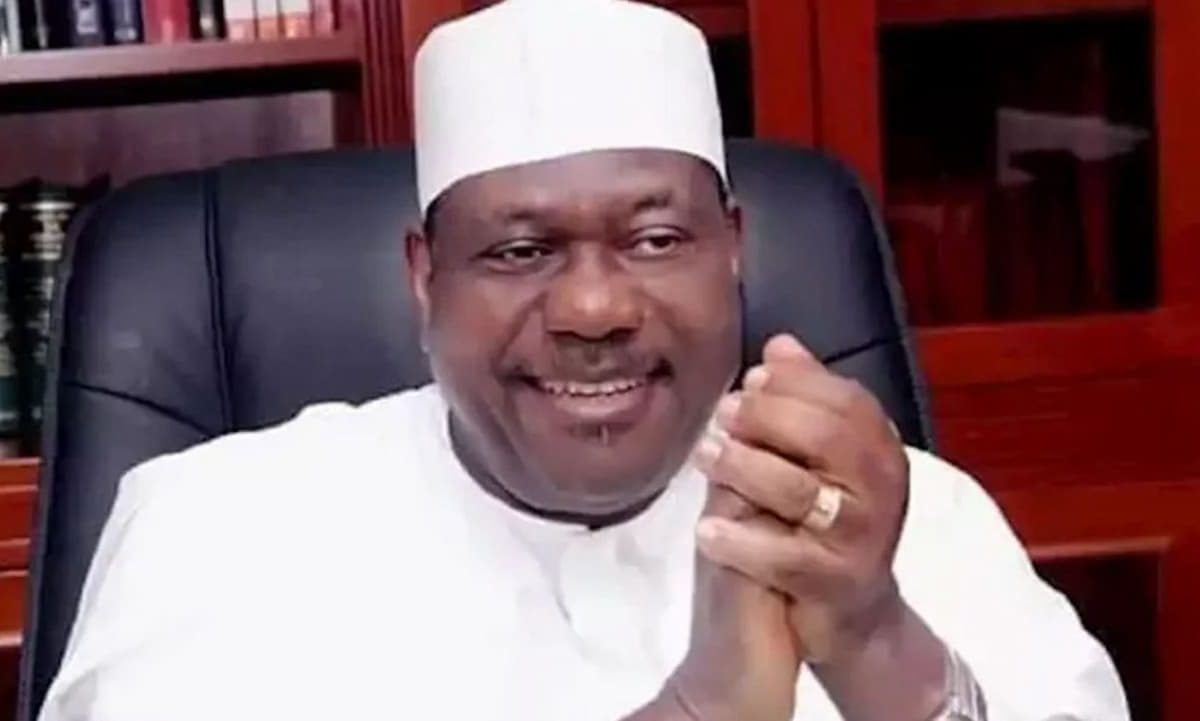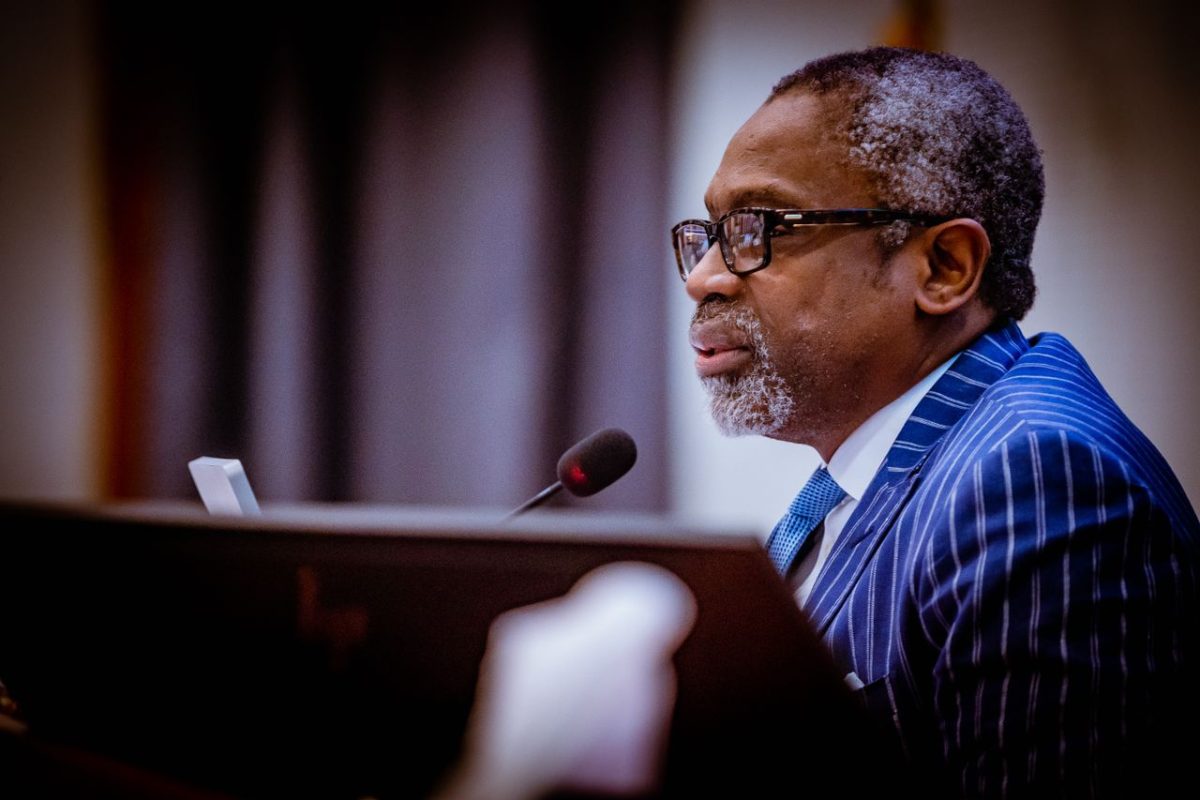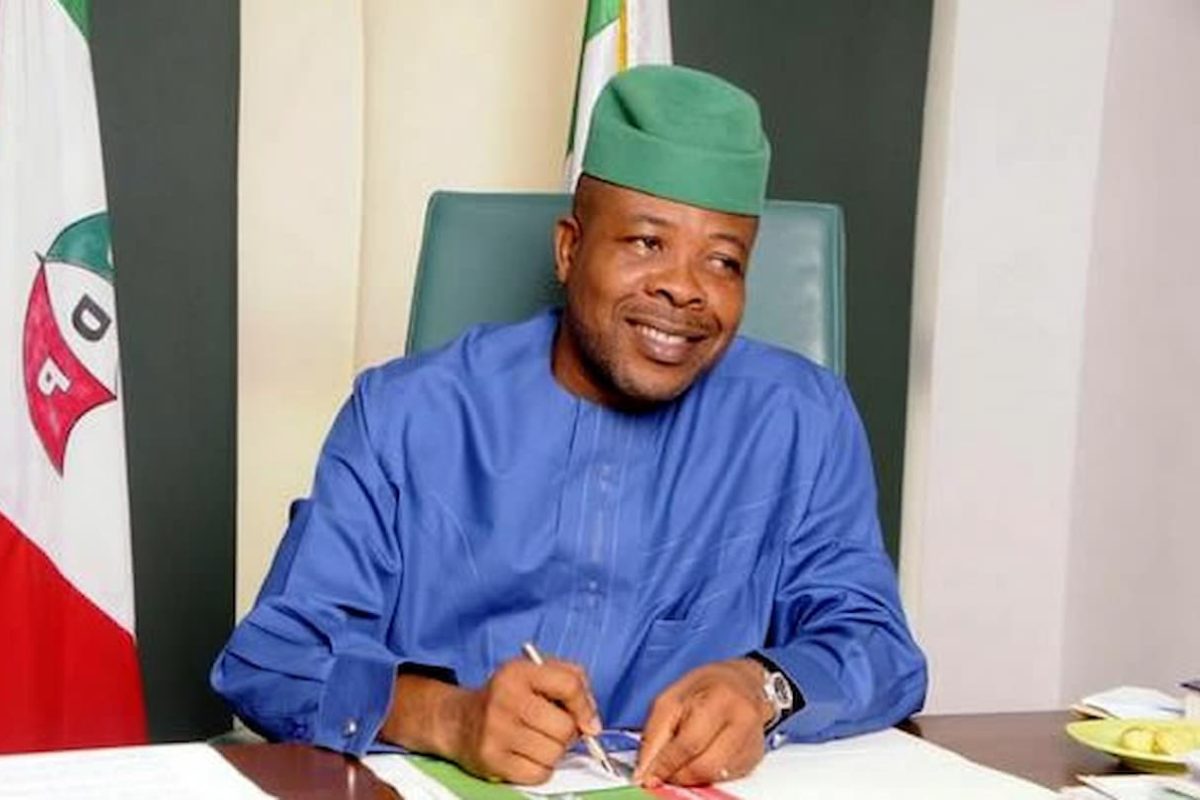Lagos State leads in female representation at the House of Representatives as Nigerians elected just 132 women out of 2,520 lawmakers in the last 25 years (1999-2024) of the federal legislature. This represents a mere 5.2% of women in a male-dominated parliament.

Women all over the world have been under-represented despite calls from different quarters for gender equality. Many scholars have identified the electoral system, the economic affluence of a country, and the state’s political culture as some of the reasons for this.
Going by the number of women who occupy positions of authority, it has become a difficult task to achieve the 35% affirmative action agreed to by African countries as data and reports available continue to show very low and slow progression of women in positions of authority.
Female representation across Africa
According to Statista, Rwanda leads with women representation in Africa with the highest female lawmakers in the lower house as of 2022 with over sixty per cent (60%), followed by Senegal with forty-six per cent (46%) of women elected in the parliament. Other countries with fair female representation in the parliament are South Africa (45.61%); Mozambique (43.2%); Namibia (44.23%) with Cape Verde and Ethiopia trailing behind with 41.67% and 41.32% respectively.
Taking a look at the female parliamentary representation in Nigeria since its return to democracy in 1999, data available indicates that women are still poorly represented due to certain factors stampeding the progression of women’s participation in politics.
Failed women bills in Nigeria
The failed ‘women’ bills in the ninth National Assembly come to the fore. Amongst the proposed laws was the bill to create additional seats for women in the National Assembly; a bill to enable Nigerian women to confer citizenship to their husbands of foreign nationals; a bill to ensure 35 per cent affirmative action for women; a bill to ensure that a minimum of 20 per cent of ministerial or commissioner nominees are women; and bill to allow a woman to become an indigene of her husband’s state after five years of marriage.
These bills failed to pass and the immediate past Speaker of the House of Representatives, Femi Gbajabiamila, at the valedictory session of the House, pleaded with his colleagues to ensure the removal of some of the constitutional barriers that have long stood in the way of women’s full and unhindered participation in politics.
“Unfortunately, we did not succeed in removing some of the constitutional barriers that have long stood in the way of women’s full and unhindered participation in the politics, governance and economy of our nation. This issue must continue to be at the forefront of our national conversations. I hope the 10th House of Representatives will take up the mantle and do better than we did,” he said.
Facts of the 25 years journey of women in parliament
As OrderPaper kick-starts our specially designed signature and incisive ‘National Assembly at 25’ series on the 4th Republic of Nigeria’s democracy, this article collates all the female lawmakers in the House of Representatives from 1999 to date, indicating their states of origin and political party affiliation. The infographics below present key facts that tell the story succinctly:

Female numbers in 25 years of the House of Representatives: As can be seen from the above, only 132 women were elected into the House from 1999 till date, covering the period of the 4th to the 10th assemblies. This is a mere 5.2% of the total number of elected members which stands at 2,520, leaving the larger chunk of 2,388 for males (94.8%)
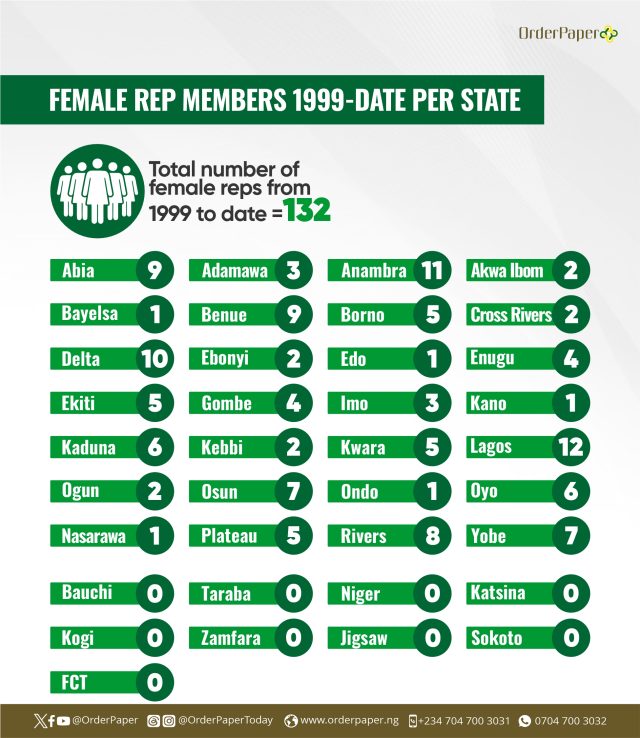
Female representation from the States: Lagos State takes the lead with 12 females elected to the House of Representatives in the last 25 years. This is closely followed by Anambra State with 11. Only 27 of the 36 States have elected a female to the House while 7, including the Federal Capital Territory (FCT), Abuja, are yet to elect a female member in the period under review.
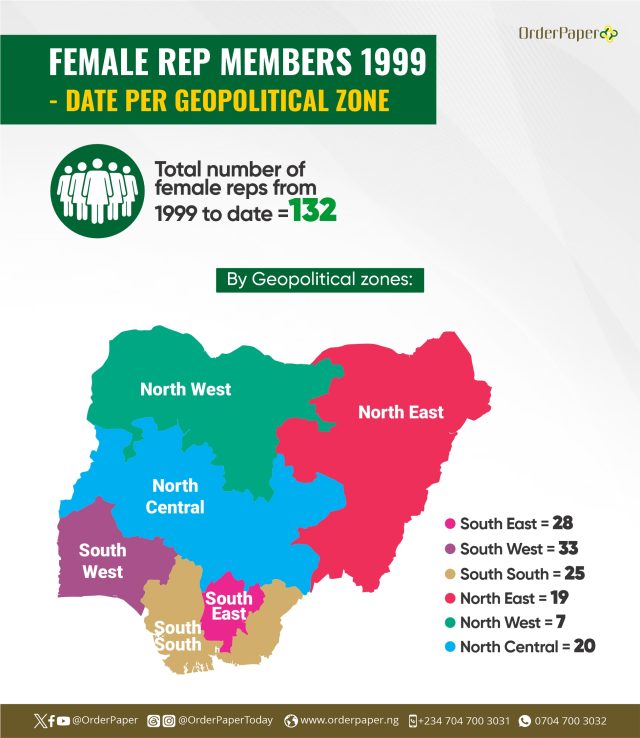
Female representation per geopolitical zone: There are six geo-political zones in Nigeria. The South-west zone leads with 33 female representatives in the House while the North-west has the least number with 7 females in 25 years.
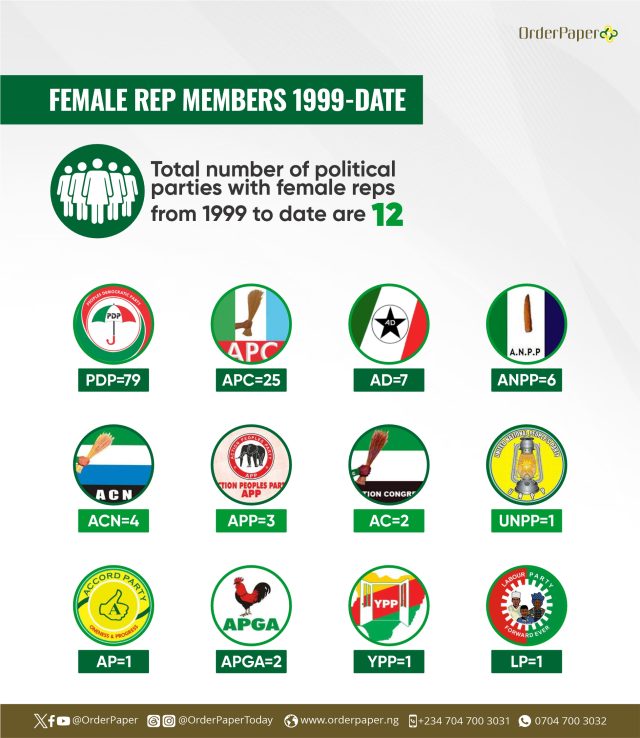
Female representation per party: The Peoples Democratic Party (PDP) has had more females elected into the House than the other political parties combined, with 79 of the 132. This may be because the PDP has been the ruling party for the most number of years in the period under review.
Female faces and the proportional representation (4th to 10th assemblies)
The pair of infographics below show the faces of females who have been elected into the House since 1999 till date (4th to 10th assemblies) and each set stood against the proportion of their male counterparts:
